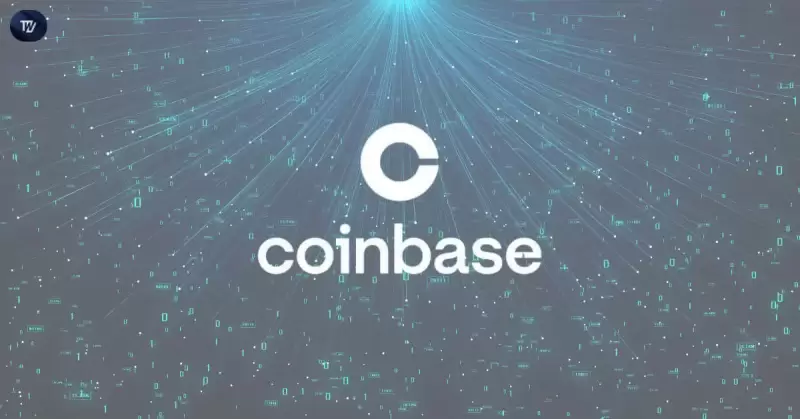 |
|
 |
|
 |
|
 |
|
 |
|
 |
|
 |
|
 |
|
 |
|
 |
|
 |
|
 |
|
 |
|
 |
|
 |
|
儘管在加密貨幣市值中排名第一,但比特幣參與分散融資(DEFI)仍然相對較低

Original Title: Can Bitcoin Thrive Onchain?
原始標題:比特幣可以壯成長嗎?
Original Author: Jean-Paul Faraj, Bankless
原始作者:Jean-Paul Faraj,無班
Original Translation: BitpushNews
原始翻譯:Bitpushnews
Despite holding the top spot in cryptocurrency market capitalization, Bitcoin's participation in decentralized finance (DeFi) remains relatively low, prompting a profound discussion about its future role.
儘管在加密貨幣市值中排名第一,但比特幣參與分散融資(DEFI)仍然相對較低,這引發了人們對其未來作用的深刻討論。
For over a decade, Bitcoin has been the cornerstone of the crypto ecosystem—lauded for its decentralization, censorship resistance, and provable scarcity. However, despite Bitcoin's dominant market cap and recent resurgence in popularity, it largely remains disconnected from one of the most vibrant areas of the crypto space—DeFi.
十多年來,比特幣一直是加密生態系統的基石,它因其權力下放,抵抗和可證明的稀缺性而受到宣告。然而,儘管比特幣的占主導地位和最近流行的重新出現,但它在很大程度上與加密貨幣空間中最充滿活力的地區之一Defi保持不變。
According to data from Bitcoin Layers, only about $30 billion worth of Bitcoin (just 1.875% of its total supply) is utilized in DeFi. In contrast, Ethereum has approximately $50 billion worth of ETH locked in DeFi, accounting for about 23% of its supply.
根據比特幣層的數據,在DEFI中僅使用了約300億美元的比特幣(僅佔其總供應量的1.875%)。相比之下,以太坊在DEFI中擁有約500億美元的ETH鎖定,約佔其供應量的23%。
This gap highlights a core contradiction in today's Bitcoin narrative: while BTC holds immense value, relatively few BTC are actively utilized on-chain to provide yield opportunities. This disparity is driving a wave of innovation around wrapping, staking, and other methods to bring Bitcoin into the DeFi economy, unlocking ways to make BTC a productive capital asset.
這一差距突出了當今比特幣敘事中的核心矛盾:儘管BTC具有巨大的價值,但相對較少的BTC被積極利用,以提供產量機會。這種差異促進了圍繞包裝,藏匿和其他方法將比特幣帶入Defi經濟的創新浪潮,從而解除了使BTC成為生產性資本資產的方法。
Bitcoin Layers: BTC supply segmented by network, showing all wrapped BTC
比特幣層:通過網絡分割的BTC供應,顯示了所有包裝BTC
Ethereum's DeFi ecosystem has seen the emergence of tools for lending, staking, and trading. In contrast, native Bitcoin remains challenging to use effectively, especially for new users. Slow transaction times, variable and often high fees, and Bitcoin's architecture lack the programmability that supports Ethereum-based applications.
以太坊的Defi生態系統已經出現了用於貸款,積分和交易的工具。相比之下,本地比特幣仍然具有效使用,尤其是對於新用戶而言。慢速交易時間,可變且通常是高費用,並且比特幣的體系結構缺乏支持基於以太坊應用程序的可編程性。
As the broader cryptocurrency space matures, an important question arises: Can Bitcoin meaningfully participate in the on-chain economy? If so, how can we bring ordinary BTC holders into the fold without forcing them to navigate a maze of bridges, wrapped tokens, and unfamiliar applications?
隨著更廣泛的加密貨幣空間的成熟,出現了一個重要的問題:比特幣可以有意義地參與鏈上經濟嗎?如果是這樣,我們如何才能將普通的BTC持有人帶入折疊,而不會迫使他們在迷宮中瀏覽橋樑,包裹的令牌和不熟悉的應用?
The Issue: Bitcoin's Design vs. DeFi's Usability
問題:比特幣的設計與Defi的可用性
Bitcoin's underlying architecture is not optimized for the high programmability of today's smart contracts. Its proof-of-work (PoW) mechanism prioritizes security and decentralization over complex logical expressions—this design choice makes it a reliable store of value but also limits its adaptability in smart contracts and complex DeFi applications. As a result, native Bitcoin struggles to integrate into the thriving composable finance ecosystems on public chains like Ethereum and Solana.
比特幣的基礎體系結構未針對當今智能合約的高程度性進行優化。它的工作證明(POW)機制優先考慮安全性和分散率在復雜的邏輯表達式上 - 此設計選擇使其成為可靠的價值存儲,但也限制了其在智能合約和復雜的DEFI應用程序中的適應性。結果,本地比特幣努力將以太坊和索拉納等公共連鎖店融入蓬勃發展的綜合金融生態系統中。
In the past, we have seen some workarounds:
過去,我們看到了一些解決方法:
· Wrapped Bitcoin: Users convert BTC into ERC-20 tokens to access Ethereum-based DeFi. This introduces custodial risks, as token liquidity may be opaque and not always backed 1:1 by third-party custodians.
·包裝比特幣:用戶將BTC轉換為ERC-20代幣,以訪問基於以太坊的defi。這引入了保管風險,因為令牌流動性可能是不透明的,並且並非總是由第三方保管人支持1:1。
· Bridging Protocols: Cross-chain platforms allow BTC to move into other ecosystems. However, manual bridging adds friction, complexity, and risk—especially for non-technical users.
·橋接協議:跨鏈平台允許BTC進入其他生態系統。但是,手動橋接增加了摩擦,複雜性和風險,尤其是對於非技術用戶而言。
· Custodial Platforms: Centralized services like Coinbase offer BTC yield but require users to forfeit custody and often pay returns in points, stablecoins, or proprietary tokens instead of BTC.
·託管平台:諸如Coinbase之類的集中服務提供BTC收益率,但要求用戶沒收監護權,並經常以積分,穩定或專有代幣而不是BTC支付回報。
Each option comes with challenges that weigh against Bitcoin's core principles: security, simplicity, and user sovereignty.
每個選項都有挑戰與比特幣的核心原則:安全性,簡單性和用戶主權。
Entry Barriers: Why User Experience Still Matters
入口障礙:為什麼用戶體驗仍然很重要
Accumulation of BTC in 2024, river.com
BTC在2024年的積累,River.com
For Bitcoin holders curious about doing more with their assets (earning yield, participating in on-chain governance, or trying DeFi), the entry pathways remain fragmented, non-intuitive, and often daunting. While the infrastructure has matured, user experience lags behind, and competitors are not just other blockchains but also TradFi.
對於比特幣持有人好奇的是對他們的資產做更多的事情(賺取收益,參與鏈政治或嘗試Fefi),進入途徑仍然是分散的,不直覺的,而且常常令人生畏。儘管基礎設施已經成熟,但用戶體驗落後於落後,競爭對手不僅是其他區塊鏈,而且是Tradfi。
This friction creates a significant entry barrier. Most users do not want to become advanced DeFi users—they want to simply and securely increase their net worth and BTC holdings without navigating a maze of applications, bridges, and protocols like recent Bitcoin buyers who have made substantial off-chain purchases through brokers, ETFs, and products like Michael Saylor's Strategy.
這種摩擦會產生重大的進入障礙。大多數用戶不想成為高級DEFI用戶 - 他們希望簡單,安全地提高其淨資產和BTC持有量,而不會導致迷宮,橋樑的迷宮和協議,例如最近通過經紀人,ETF以及Michael Saylor等產品進行大量脫鏈購買的比特幣購買者。
To transition the next wave of users from simple off-chain holders to on-chain users, tools need to eliminate this complexity while not sacrificing control, self-custody, or transparency. This is where emerging protocols and modern wallet experiences begin to play a crucial role—providing user-friendly access to DeFi's foundational functionalities while keeping Bitcoin's core principles intact.
為了將下一波用戶從簡單的脫鏈持有人轉變為鏈用戶,工具需要消除這種複雜性,而不犧牲控制,自我遵守或透明度。在這裡,新興協議和現代錢包體驗開始起著至關重要的作用,可以使用戶友好地訪問DEFI的基本功能,同時保持比特幣的核心原則完好無損。
A better user experience is not just a nice-to-have; it is a key infrastructure for the next phase of Bitcoin adoption.
更好的用戶體驗不僅是一個不錯的選擇。它是下一階段採用比特幣的關鍵基礎架構。
New Ways for On-chain BTC Yield and Productivity
鏈上BTC產量和生產力的新方法
Many emerging solutions aim to make Bitcoin more usable in DeFi—each with different trade-offs:
許多新興的解決方案旨在使比特幣在Defi中更有用 - 以不同的折衷:
1. Staking, Re-staking, and Points-based Yield Programs
1。積分,重新制定和基於積分的收益計劃
Platforms like Babylon and Lombard now offer Bitcoin-related yield programs through points or reward tokens, often achieved via staking/re-staking, which can typically be redeemed for benefits or future airdrops. These systems appeal to early adopters and crypto-native users chasing airdrops and platform-specific token economics. These products often
現在,巴比倫和倫巴第等平台通過積分或獎勵代幣提供與比特幣相關的收益計劃,通常可以通過堆放/重新制定來實現,通常可以兌換這些收益或未來的空投。這些系統吸引了早期採用者和加密本地用戶追逐空調和特定於平台的代幣經濟學。這些產品經常
免責聲明:info@kdj.com
所提供的資訊並非交易建議。 kDJ.com對任何基於本文提供的資訊進行的投資不承擔任何責任。加密貨幣波動性較大,建議您充分研究後謹慎投資!
如果您認為本網站使用的內容侵犯了您的版權,請立即聯絡我們(info@kdj.com),我們將及時刪除。
-

- 最近的安全漏洞導致ZK價格大幅下降
- 2025-04-16 06:10:13
- 最近的安全漏洞導致了ZK價格大幅下降,因為黑客設法從受損的管理員帳戶中耗盡了價值500萬美元的代幣。
-

-

- 比特幣(BTC)的價格達到每日高度為86429美元
- 2025-04-16 06:05:13
- 隨著關稅的擔憂繼續在市場上加重,美國的股票動搖了。美國在關稅談判方面幾乎沒有取得進展。
-

-

- Coinbase(硬幣)從監護權服務中刪除100多個加密資產
- 2025-04-16 06:00:12
- Coinbase的4月14日推文宣布此舉,稱他們定期審查其支持資產,以確保他們仍然滿足
-

-

- Crypto分析師說
- 2025-04-16 05:55:12
- 一位受歡迎的加密策略師說,比特幣(BTC)正處於確認宏觀級別的看漲信號的邊緣,這可能會觸發正在進行的集會的下一條。
-

-

- ZKSYNC(ZK)2層縮放解決方案遭受了500萬美元的利用,導致ZK令牌的損失。
- 2025-04-16 05:50:13
- ZKSYNC(ZK)遭受了重大利用,導致價值500萬美元的ZK令牌損失。


























































